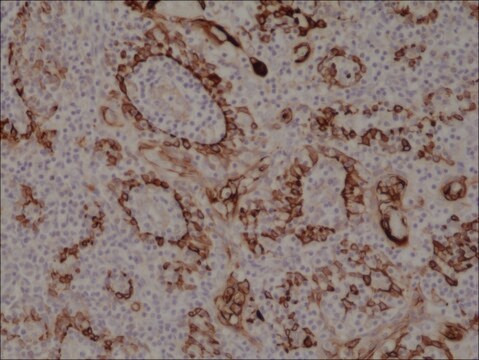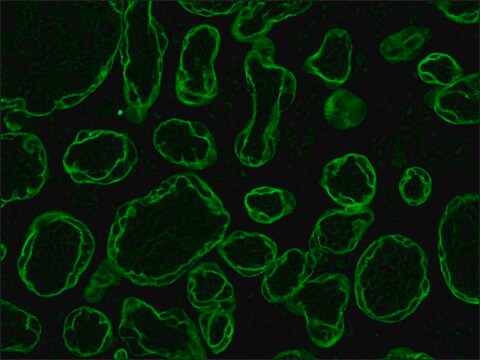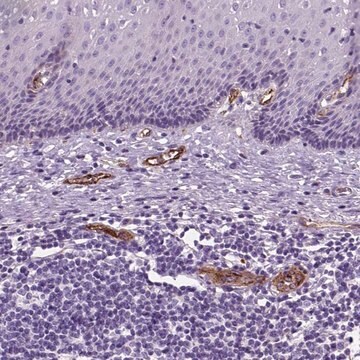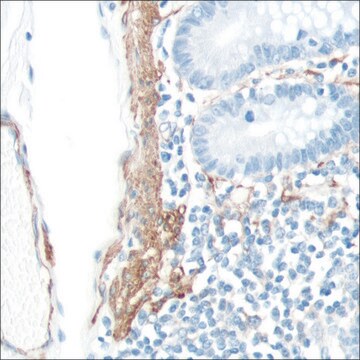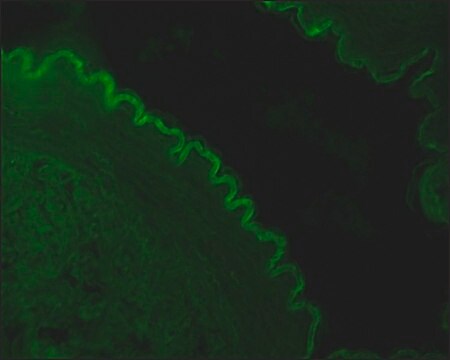C0791
Monoclonal Anti-Cytokeratin Peptide 13 antibody produced in mouse
clone KS-1A3, ascites fluid
About This Item
Productos recomendados
biological source
mouse
Quality Level
conjugate
unconjugated
antibody form
ascites fluid
antibody product type
primary antibodies
clone
KS-1A3, monoclonal
contains
15 mM sodium azide
species reactivity
human
technique(s)
immunohistochemistry (formalin-fixed, paraffin-embedded sections): suitable
indirect immunofluorescence: 1:100 using formalin-fixed, paraffin-embedded human tissue sections.1
microarray: suitable
isotype
IgG1
UniProt accession no.
shipped in
dry ice
storage temp.
−20°C
target post-translational modification
unmodified
Gene Information
human ... KRT13(3860)
Specificity
Immunogen
Application
Immunofluorescence (1 paper)
- Immunohistochemistry (formalin-fixed, paraffin-embedded sections)
- Indirect immunofluorescence at a working dilution of 1:100 using formalin-fixed, paraffin-embedded human tissue sections.
- Microarray
Biochem/physiol Actions
Disclaimer
¿No encuentra el producto adecuado?
Pruebe nuestro Herramienta de selección de productos.
Storage Class
10 - Combustible liquids
wgk_germany
nwg
flash_point_f
Not applicable
flash_point_c
Not applicable
Elija entre una de las versiones más recientes:
¿Ya tiene este producto?
Encuentre la documentación para los productos que ha comprado recientemente en la Biblioteca de documentos.
Nuestro equipo de científicos tiene experiencia en todas las áreas de investigación: Ciencias de la vida, Ciencia de los materiales, Síntesis química, Cromatografía, Analítica y muchas otras.
Póngase en contacto con el Servicio técnico